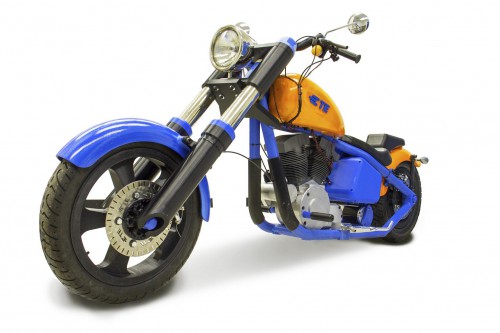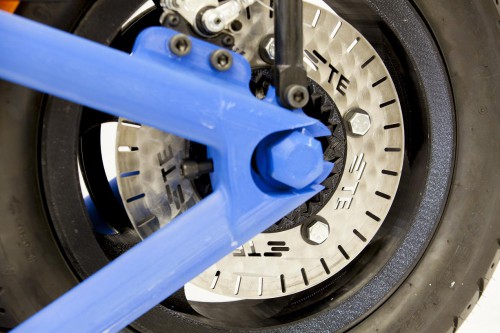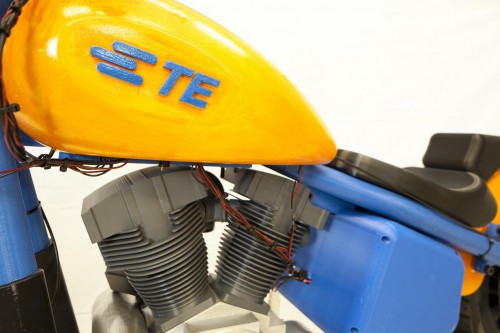A fully-functioning 3D printed Harley-Davidson Softail has been reveiled at the Californian technology fair RAPID in Long Beach. The bike demonstates the ability to design a motorcycle on a computer, print it in plastic, add tires and an engine, then take it for a spin around the block. The plastic machine is claimed to be capable of supporting two adults – the concept is nothing short of exciting.

The first plastic Harley ever made
TE Connectivity’s Charles D. Fry presented what is claimed to be first “fully functional 3D printed motorcycle for an internal event”. It’s an impressive concept: the bike was printed using ABS plastic, yet it can support 181kg or two adult riders. The plastic Softail weighs 113kg. The project took 1,000 work hours and $25,000 but seeing the result, it was worth it.
The team of TE Connectivity used Creo design software while the ABS plastic parts were then 3D printed on various Fortus 3D printers from Stratasys. Of course, not the entire bike is made of plastic. The motor, the battery, the mirrors, the wiring and the tires have been sourced elsewhere but the frame, wheels and bearings are all printed in plastic.

The main
load-bearing parts were constructed with Fused Deposition Modeling (FDM)
technology
The first-ever plastic Harley also features a 1 hp, 750W motor that can accelerate the bike to a 15 mph (24 km/h) speed. The bike is fully functional although “the issue is the capability of the motor. It is only one horsepower and has difficulty with riders over 200 pounds and on hills.” explains TE. „We built samples (of the wheel bearings) and tested them at 2000 rpm,” he added. “We then built rims to insure that the beads would hold the tires when the inner tubes are fully inflated. After these items, it was mostly aesthetic issues and good design practice.”
Meguiar’s MC20506 Motorcycle Plastic Cleaner/Polish – 6 oz.
The TE team’s design concept started almost a year prior to actually building the 3D printed motorcycle,” TE representatives tell 3DPrint.com. “We thought about making a replica of an existing motorcycle, but decided against that. We then started with basic hard tail frame design and expanded upon it. The frame was simulated to insure that we had sufficient material and a few minor changes were made due to those simulations to reduce stress concentrations.”

Some parts like the wiring were not printed
TE’s bike shows us how fast this industry evolves – the first functional printed car was unveiled and driven just last September. Is this the future of mobility?

